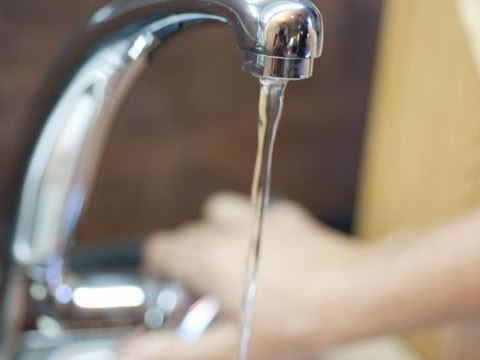Top Ways for Resolving Low Water Pressure in Your Home
Top Ways for Resolving Low Water Pressure in Your Home
Blog Article
Are you currently trying to locate insight about 4 Ways to Troubleshoot Low Water Pressure?

Low tide pressure in your house can be an irritating issue, impacting whatever from bathing to washing recipes. If you're experiencing weak water flow, there are numerous possible causes and solutions to explore. In this overview, we'll go over usual factors for low tide stress and practical actions to attend to the problem efficiently.
Introduction to Low Water Pressure
Low tide stress occurs when the flow of water from your taps, showers, and various other components is weaker than usual. This can make daily jobs more difficult and less efficient. Understanding the root causes of low tide pressure is critical to locating the right remedy.
Common Root Causes Of Low Water Pressure
Pipeline Obstructions
Over time, pipes can come to be obstructed with mineral deposits, sediment, or particles, limiting the circulation of water. This is a typical concern in older homes with galvanized steel pipelines.
Corrosion
Deterioration within pipes can lead to leakages and reduced water stress. Rust build-up can constrict water flow, particularly in maturing plumbing systems.
Faulty Pressure Regulators
Stress regulatory authorities are in charge of preserving regular water pressure in your house. If they malfunction, it can cause low tide stress or unequal flow throughout your home.
Metropolitan Water Supply Issues
In some cases, the problem lies outside your home. Metropolitan supply of water concerns, such as main line leaks or maintenance job, can briefly minimize water stress in your area.
Just How to Detect Low Water Pressure
Checking Taps and Components
Beginning by examining the water stress at various taps and components throughout your home. If the issue is separated to specific locations, it may suggest localized problems.
Checking Pipelines
Evaluate noticeable pipelines for indications of leakages, rust, or obstructions. Take notice of any kind of uncommon audios, such as knocking or rattling pipelines, which could suggest problems within the plumbing system.
Consulting with a Plumber
If you're unable to determine the root cause of low water stress, consider working with a professional plumber to perform a detailed assessment. They can determine underlying problems and recommend ideal solutions.
Do It Yourself Solutions to Fix Low Water Stress
Cleaning Up Aerators and Showerheads
Natural resources can build up in aerators and showerheads, lowering water circulation. Get rid of and clean up these elements routinely to improve water stress.
Flushing Water Heater
Debris buildup in the water heater can restrict flow and lower performance. Flushing the tank occasionally assists get rid of debris and preserve ideal performance.
Examining Pressure Regulatory Authority
Guarantee that the stress regulatory authority is working correctly. Readjusting or replacing the regulator can aid bring back correct water pressure throughout your home.
Clearing Clogs in Piping
For minor obstructions, try making use of a plumbing snake or chemical drainpipe cleaner to clear blockages in pipes. Beware when using chemicals and comply with safety guidelines.
When to Call a Specialist Plumber
If DIY efforts fail to fix the problem or if you presume substantial plumbing troubles, it's best to seek help from a qualified plumber. They have the knowledge and devices to attend to intricate issues securely and effectively.
Preventive Measures to Keep Water Stress
Routine Maintenance
Arrange regular maintenance for your plumbing system to stop issues such as corrosion, leakages, and obstructions. Addressing small troubles early can assist stay clear of more considerable repair services later on.
Installing a Stress Booster
Consider installing a pressure booster pump to improve water pressure in locations with continually reduced flow. This can be particularly helpful for multi-story homes or homes with high-demand fixtures.
Tracking Water Use
Bear in mind water usage habits and avoid overtaxing the plumbing system. Basic adjustments, such as astonishing showers and laundry loads, can aid preserve appropriate water stress.
Final thought
Handling low tide pressure can be irritating, however determining the underlying causes and carrying out proper remedies can bring back optimal circulation throughout your home. Whether it's cleansing aerators, examining pipes, or seeking advice from a plumber, taking positive actions can guarantee a consistent supply of water for your day-to-day demands.
FOUR WAYS TO FIX LOW WATER PRESSURE NOW
Turning on a shower or faucet only to find the water comes out in a sad, slow drizzle is never a good feeling. How exactly are you supposed to wash a pan or take a quick shower when it takes 10 minutes just to rinse off a little soap? The good news is that when your water pressure is bad, there's always a cause: typically one that can be easily fixed. Here are some of the most common causes of low pressure and what you can do to fix the issue:
DEBRIS AND MINERAL DEPOSIT BUILDUPS
If you notice low water pressure from just one or two of the fixtures in your house, the problem likely has to do with debris buildup. Water is full of minerals and other debris, all of which can accumulate in your pipes and on your fixtures. This can cause a blockage that affects how much water flows through. To fix this, try filling a small plastic bag with white vinegar, and use a rubber band to hang it around your showerhead or faucet. Let the head of the fixture soak for a few hours, and the vinegar should loosen the deposits.
WATER LEAKS
Leaks are another common cause of low water pressure. If water is flowing out of your plumbing through a hole or crack before it can reach your fixture, the pressure coming out of the faucet or showerhead will be lower. A plumbing professional is your best bet for finding and repairing a leak in your water supply pipes.
Leaks are another common cause of low water pressure. If water is flowing out of your plumbing through a hole or crack before it can reach your fixture, the pressure coming out of the faucet or showerhead will be lower. A plumbing professional is your best bet for finding and repairing a leak in your water supply pipes.
FOUR WAYS TO FIX LOW WATER PRESSURE NOW
Turning on a shower or faucet only to find the water comes out in a sad, slow drizzle is never a good feeling. How exactly are you supposed to wash a pan or take a quick shower when it takes 10 minutes just to rinse off a little soap? The good news is that when your water pressure is bad, there's always a cause: typically one that can be easily fixed. Here are some of the most common causes of low pressure and what you can do to fix the issue:
DEBRIS AND MINERAL DEPOSIT BUILDUPS
If you notice low water pressure from just one or two of the fixtures in your house, the problem likely has to do with debris buildup. Water is full of minerals and other debris, all of which can accumulate in your pipes and on your fixtures. This can cause a blockage that affects how much water flows through. To fix this, try filling a small plastic bag with white vinegar, and use a rubber band to hang it around your showerhead or faucet. Let the head of the fixture soak for a few hours, and the vinegar should loosen the deposits.
WATER LEAKS
Leaks are another common cause of low water pressure. If water is flowing out of your plumbing through a hole or crack before it can reach your fixture, the pressure coming out of the faucet or showerhead will be lower. A plumbing professional is your best bet for finding and repairing a leak in your water supply pipes.
Leaks are another common cause of low water pressure. If water is flowing out of your plumbing through a hole or crack before it can reach your fixture, the pressure coming out of the faucet or showerhead will be lower. A plumbing professional is your best bet for finding and repairing a leak in your water supply pipes.
A VALVE ISSUE
If you have low water pressure throughout your home, check your main shut-off valve to make sure it's completely open. You may also want to see if there's a pressure-reducing valve installed. If there is, have a plumber help you adjust the settings to get the pressure you're looking for.
OTHERS USING WATER
Believe it or not, your low water pressure could be caused by your neighbors. If you notice low pressure at certain times of day, it may be because you and the people living next to you have similar schedules - when everyone is showering at the same time, the pressure will be lower in every home. Low pressure throughout the neighborhood may also be caused by an issue with your municipal water supply. If that's the case, call the supplier to see if they're working on the issue.
https://www.rotorooter.com/blog/water-leaking/low-water-pressure-fixes/

I am very eager about 9 Reasons for Low Water Pressure in Your House and I really hope you appreciated the entire entry. Those who enjoyed reading our post kindly be sure to share it. I praise you for being here. Please pay a visit to our site back soon.
Website Report this page